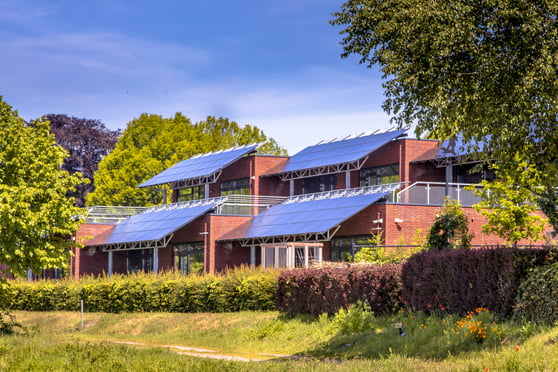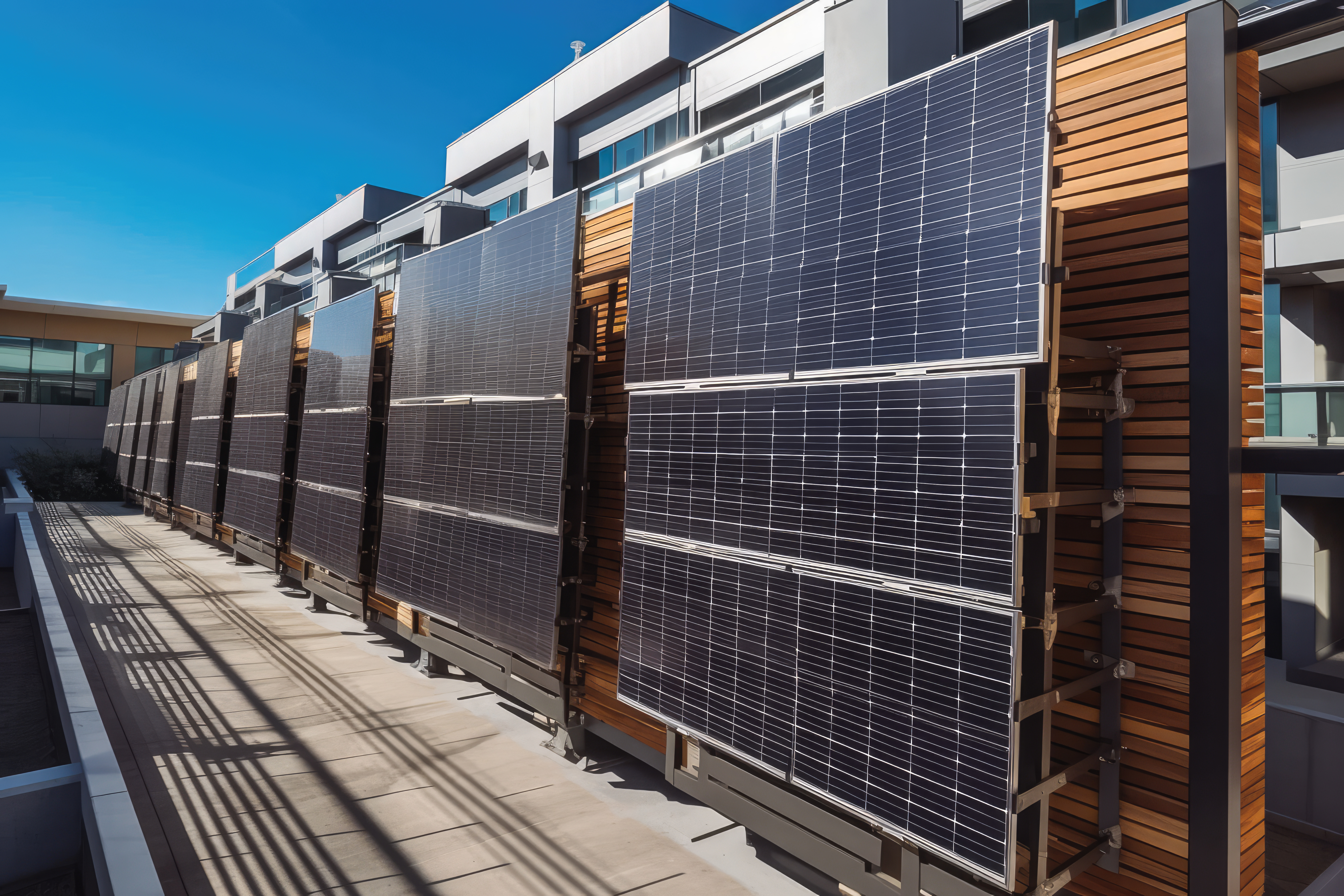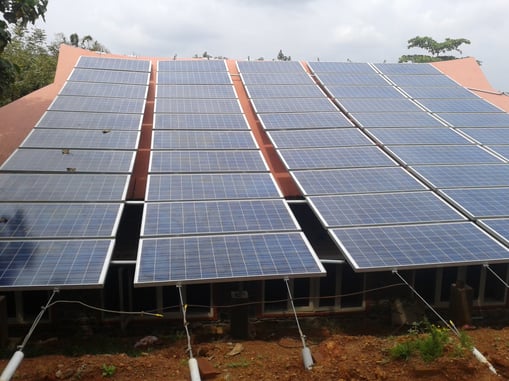Solar panels are rapidly going popularity as a source of renewable energy. They are devices that convert light from the sun into electricity and are used in countless applications. Solar Panels are an integral part of solar energy systems and are increasingly being used to power everything from residential homes to large-scale industrial facilities. These panels are typically blue or black and are often installed on rooftops, open fields, or other areas that receive a significant amount of sunlight.
What is a solar panel?
A solar panel is made up of individual solar cells. These cells are typically made of silicon, a semiconductive material that is found in the Earth's crust. Each solar cell works independently, but when combined with a solar panel, it can generate a significant amount of electricity. Solar technology continues to grow popularity in both residential and corporate settings.
PVC and PU Coated Panels
Both PVC and PU coatings provide important protection to solar panels, extending their lifespan and ensuring optimal performance. They shield the inner workings of the panel from environmental hazards and mechanical stress, contributing significantly to the overall efficiency and durability of solar energy systems.
PVC is a widely used synthetic plastic polymer. In the context of solar panels, PVC is commonly used in the creation of the panel's backing sheet. The backing sheet's main function is to provide electrical insulation and protect the inner components from environmental factors like moisture, UV light, and mechanical damage. PVC coated are well-regarded for their durability, affordability, and resistance to weather and UV radiation
Like PVC, PU serves as a protective layer against environmental damage, but it can also improve the panel’s efficiency. PU coatings are extremely durable, offer excellent weather resistance, and can withstand a wide range of temperatures. Additionally, PU coatings can be formulated to be more environmentally friendly than PVC, which is beneficial when considering the panel's end of life.
What does it mean to "Finish Solar Panels"?
The term "finishing solar panels" is not a standard term in the solar industry, so its meaning may vary depending on the context. However, it could be interpreted to mean the final steps involved in the manufacturing or installation of solar panels.
In Manufacturing: Finishing solar panels might refer to the concluding stages in the production of solar panels. This could include:
- Assembly: Once individual solar cells are manufactured, they are assembled into a panel. This often involves placing the cells onto a backing sheet and covering them with a protective layer of glass or another material. The panels are then framed for additional stability. There are many different ways this can be done. A common solution out there is thermoplastic welding. Thermoplastic welding is the fusing of two pieces of PVC or PU together using heat, speed, and pressure. Providing a secure, waterproof seal to protect the solar panels while making them functional.
- Quality Assurance: The finished panels undergo testing and quality checks to ensure they perform correctly and are free of defects.
In Installation: If referring to the installation of solar panels, finishing might mean:
-
System Check and Inspection: After the solar panels are physically installed and electrically connected, the system is thoroughly checked. This includes ensuring all connections are secure, the system is properly grounded, and the panels are correctly oriented for maximum sunlight exposure.
-
Commissioning: Once inspected and approved, the system is officially activated or commissioned. This often involves a final walkthrough with the solar installer, who will explain the system's operation and maintenance.
-
Monitoring: After commissioning, the system's performance is typically monitored to ensure it is functioning optimally. Many modern solar panel systems include monitoring software that allows you to track energy production in real time.
So, to wrap up, the term "finishing solar panels" could refer to the final stages in the production or installation of solar panels, culminating in a complete, functional solar power system.

How are Solar Panels used on Tents, Car Ports, and Awnings?
As we transition to a more clean energy, solar power continues to diversify and expand intorenewable energy options. More and more people are adopting the ingenious idea of integrating solar panels into tents, carports, and awnings - everyday structures that, until recently, hadn't been considered as possible energy sources. It's a simple, effective way to harness the sun's power, and it's transforming the way we approach renewable energy.
Solar-Powered Tents
A day out in nature doesn't mean you have to disconnect from your gadgets anymore. Solar-powered tents are an exciting innovation for outdoor enthusiasts or event hosts. By integrating flexible solar panels into the fabric of the tents, you can soak up the sun during the day and use that stored energy to power lights, generators, or even run appliances. They're perfect for events of all types and an excellent emergency preparedness resource. Solar tents have also become ideal for those hosting large events off the grid or away from traditional structures.
Solar Car Ports
Solar car ports have taken the concept of traditional carports and supercharged it with clean energy. These structures use solar panels as the roofing material, capturing sunlight during the day to charge electric vehicles, power your home, or feed energy back into the grid. Not only do solar car ports provide shade and protection for your vehicles, but they also serve as an energy production center, making them a highly efficient use of space. As electric vehicles become more prevalent, the demand for solar carports is expected to grow exponentially.
Solar Awnings
Traditional awnings offer shade and a touch of aesthetic appeal, but with the incorporation of solar panels, they've transformed into power-generating structures. Solar awnings are made with thin, flexible solar panels that fit seamlessly into the design. During the day, these awnings reduce the heat entering your house while also generating electricity. It's a dual benefit - lower cooling costs and a reduced electricity bill.
How can Miller Weldmaster Help?
Miller Weldmaseter has countless solutions, both standard and custom, for the Solar Panel industry. With nearly 50 years in thermoplastic (fabric) welding, we have the knowledge and technology to build a machine that would convert individual solar panels into larger panels. Allowing you to create the size panel you need when you need it. To find out more about our solutions for the Solar Panel industry, reach out to our team of experts today!


